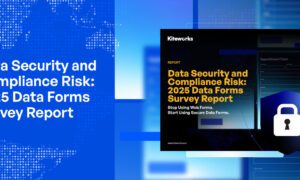In the evolving landscape of distributed database systems, the financial sector is undergoing a fundamental transformation in data management. Institutions are increasingly adopting hybrid architectures to balance performance, scalability, and security. This shift is explored in-depth by Subrahmanyam Mamidi, whose research examines the convergence of SQL and NoSQL technologies in financial services. His insights highlight how modern data strategies empower financial firms to efficiently manage complex workloads while maintaining operational agility.
The Challenge of Traditional Systems
For decades, relational databases (RDBMS) have formed the foundation of financial data infrastructure. However, their rigid schemas and limited scalability pose challenges in meeting modern demands for real-time analytics, regulatory compliance, and high-volume transactions. These systems often experience performance bottlenecks, particularly in global financial operations that require instantaneous processing across multiple regions. As financial institutions strive for faster insights and enhanced efficiency, traditional databases struggle to keep pace, making it essential to adopt more flexible and scalable data architectures.
The Rise of Hybrid Data Architectures
Hybrid architectures—integrating NoSQL solutions like Apache Cassandra with in-memory data grids—are emerging as a powerful solution. These architectures allow institutions to combine the strengths of structured and unstructured data management, providing the flexibility needed for dynamic financial applications. By leveraging distributed NoSQL models alongside SQL-based transactional systems, firms can optimize data availability, consistency, and scalability.
Data Tiering for Performance Optimization
A key aspect of hybrid architectures is intelligent data tiering. Financial institutions are implementing multi-tier storage models:
- Hot Tier: Frequently accessed data is stored in memory caches or NoSQL stores for rapid retrieval.
- Warm Tier: Regularly used data is maintained in columnar SQL databases.
- Cold Tier: Historical and analytical data is housed in cloud storage for long-term access. This approach ensures that mission-critical data is processed with minimal latency while optimizing costs for less frequently accessed records.
Security and Compliance in Hybrid Models
Security remains a top priority for financial organizations handling sensitive transactions. Hybrid architectures incorporate multi-layered encryption, including AES-256 for data at rest and TLS 1.3 for network communications. Additionally, regulatory compliance is ensured through jurisdiction-aware data residency controls and real-time monitoring of privileged access. These frameworks help financial firms maintain the integrity and confidentiality of their data while adapting to evolving regulations.
Performance Benchmarks and Business Benefits
The adoption of hybrid architectures has led to remarkable performance improvements. Studies indicate:
- 85% reduction in customer profile retrieval time, from 240ms to 36ms.
- 338% increase in transaction processing capacity, from 8,000 to 35,000 transactions per second.
- 91% faster execution of complex analytics queries, enabling real-time financial insights. These enhancements translate directly into improved customer experiences, reduced infrastructure costs, and accelerated innovation cycles.
Scalability and Resilience in Financial Applications
Hybrid architectures support elastic scaling, allowing systems to expand based on demand. Financial institutions have observed near-linear cost scaling, with efficiency rates of up to 87% at 10x workload increases. Additionally, regional failover mechanisms ensure seamless operations, even during infrastructure failures, reinforcing the reliability of financial applications.
Overcoming Implementation Challenges
Despite the benefits, transitioning to a hybrid model presents challenges, including:
- Data consistency management between SQL and NoSQL systems.
- Schema evolution complexities across heterogeneous data stores.
- Increased integration complexity, requiring expertise across multiple platforms. Organizations that navigate these challenges successfully employ phased migration strategies, robust monitoring frameworks, and team skill development programs to ensure smooth transitions.
Best Practices for Adopting Hybrid Architectures
Financial institutions can maximize the potential of hybrid architectures by:
- Aligning data strategies with business requirements, ensuring the right storage models for different workloads.
- Implementing incremental migration phases, starting with non-critical data before transitioning core systems.
- Utilizing automated reconciliation processes to maintain data integrity across distributed environments.
- Enhancing operational resilience with real-time monitoring and failure simulations.
In conclusion, as data complexity in financial services continues to grow, hybrid architectures offer the scalability, efficiency, and security needed to maintain a competitive edge. Subrahmanyam Mamidi’s research underscores the transformative potential of these models, illustrating how financial institutions can harness them to enhance performance and operational agility. By embracing hybrid approaches, firms can future-proof their data infrastructure, ensuring long-term resilience in an increasingly dynamic digital landscape.



































